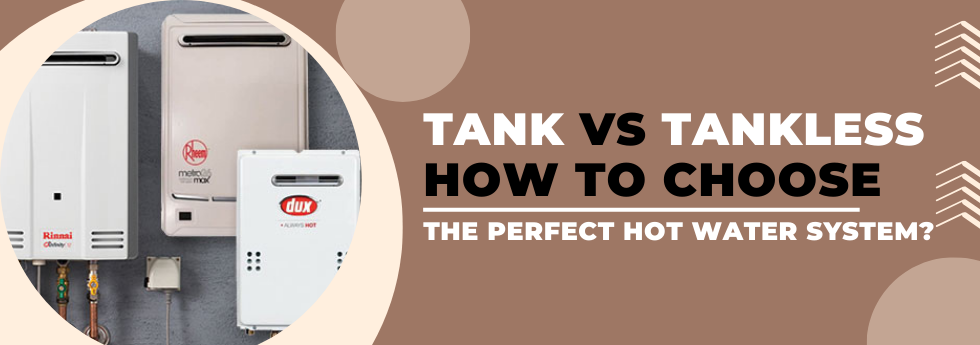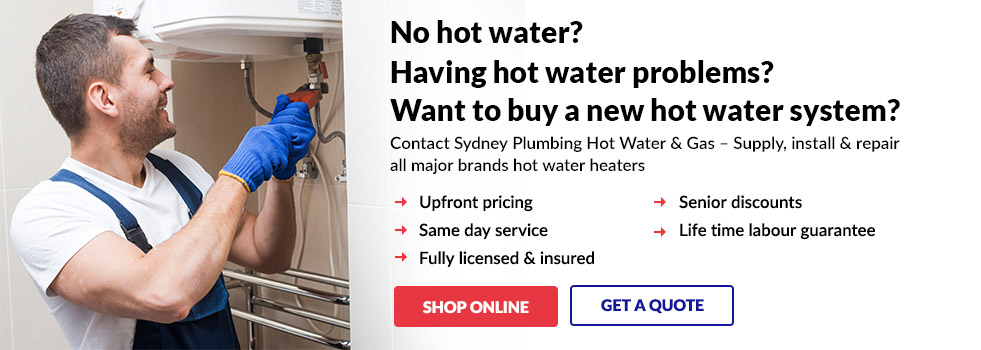 Water heaters are essential fixtures in modern homes, ensuring you have hot water for daily tasks like bathing, cooking, and cleaning. With evolving technologies, homeowners have to make a crucial decision: Either stick with traditional systems or switch to more innovative options like tankless or continuous flow hot water systems. This guide will help you navigate the key features, benefits, and drawbacks of both options, enabling you to make the best choice for your household.
Water heaters are essential fixtures in modern homes, ensuring you have hot water for daily tasks like bathing, cooking, and cleaning. With evolving technologies, homeowners have to make a crucial decision: Either stick with traditional systems or switch to more innovative options like tankless or continuous flow hot water systems. This guide will help you navigate the key features, benefits, and drawbacks of both options, enabling you to make the best choice for your household.
I. Understanding How Traditional Water Heaters Work?
Traditional water heaters, often referred to as storage water heating systems, depend on a tank to store, and heat water. Once the tank is filled, the water is heated for on-demand use.
Key Features of Traditional Systems:
- Capacity: Available in sizes ranging from 110 to 300 litres, making them suitable for various household sizes.
- Installation: Requires a significant amount of space, typically in basements, garages, or utility rooms.
- Usage: Commonly found in homes due to their simplicity and relatively lower upfront cost.
While these systems are reliable, they have limitations in providing continuous hot water, especially in households with high water usage.
II. How Do Tankless Water Heaters Work?
Tankless water heaters are also known as instant hot water systems, and they work without a storage tank. Instead, they heat water directly as it flows through the unit, providing hot water only when needed.
Key Features of Tankless Systems:
- Compact Design: Wall-mounted units need minimal space, ideal for smaller homes or apartments.
- Energy Efficiency: Heat water only when required, reducing energy wastage.
- Continuous-Flow: These systems provide continuous hot water, ensuring no one experiences a cold shower again.
This innovative design makes tankless systems an appealing choice for those prioritising energy savings and space efficiency.
III. Advantages and Drawbacks of Traditional Systems:
Merits of Traditional Systems
- Lower Initial Cost: More affordable to purchase and install.
- Reliable Performance: Simple technology ensures dependable hot water storage.
- Ease of Maintenance: Repairs and replacements are generally straightforward.
Limitations of Traditional Systems
- Energy Inefficiency: Constantly reheating stored water increases energy bills.
- Bulky Design: Requires significant space, making it less suitable for small homes.
- Limited Hot Water Supply: When the tank is empty, you’ll have to wait for it to refill and reheat.
IV. Advantages and Drawbacks of Tankless Systems:
Merits of Tankless Systems
- Continuous Hot Water: Perfect for households with high water demands.
- Energy Efficiency: Heat water only when needed, reducing energy consumption.
- Space-Saving Design: Compact units are easy to install in tight spaces.
- Durability: Typically lasts longer than traditional systems, often up to 20 years.
Shortcomings of Tankless Systems
- Higher Upfront Cost: Installation and system prices are significantly higher.
- Simultaneous Use Limitations: It may struggle to supply hot water to multiple fixtures simultaneously.
- Retrofitting Needs: Older homes may require costly upgrades to accommodate tankless systems.
V. Tank vs. Tankless – Comparing Costs:
Initial Investment
The initial investment for storage tank and tankless (instant hot water) systems in Australia typically varies based on the brand, capacity, and installation requirements.
Key Factors Influencing Costs:
- System Type and Capacity: Larger storage tanks or high-output tankless units cost more.
- Brand and Features: Premium brands and advanced features like Wi-Fi control can increase costs.
- Installation Complexity: Tankless systems often require retrofitting, which adds to installation expenses.
VI. Operating Costs
Tankless systems are more energy-efficient, potentially saving homeowners up to 30% on their energy bills. Traditional systems, however, incur higher operating costs due to standby heat loss.
Maintenance and Repairs
While traditional systems require occasional tank flushing and parts replacement, tankless systems may need more specialised servicing, which can be pricier but less frequent.
While storage tank systems are more affordable upfront, tankless systems can offset their higher costs with long-term energy savings.
VII. How They Impact the Environment?
Energy Usage
Traditional systems consume more energy to maintain the tank’s temperature. Conversely, tankless systems heat water only when needed, making them significantly more efficient.
Environmental Impact
By reducing energy consumption, tankless systems contribute to a lower carbon footprint. Traditional systems, with their higher energy use, are less eco-friendly but still reliable in areas with abundant energy resources.
VIII. What Are the Installation Considerations?
Space Requirements
- Traditional Systems: Water heating systems with storage tanks require a designated area.
- Tankless Systems: Wall-mounted water heating systems do not need floor space, which is ideal for compact homes.
Installation Complexity
Installing a tankless system requires upgrades to the property’s electrical or gas infrastructure, leading to higher costs and longer installation times. Traditional systems, in comparison, have straightforward installation requirements.
IX. Is Switching to a Tankless System Right for You?
Factors to Consider
- Household Size: Large families with high water demands might benefit from continuous-flow tankless water heating systems.
- Budget: If upfront costs are a concern, traditional systems remain a practical option.
- Water Usage Patterns: Homes with simultaneous water use may need multiple tankless units or stick with traditional systems.
- Space Availability: Smaller homes may find the compact design of tankless systems more suitable.
Wrapping It Up
Deciding between traditional and tankless water heaters comes down to your household’s specific needs. Traditional systems are cost-effective and reliable but lack the energy efficiency and space-saving benefits of tankless options. On the other hand, tankless systems offer continuous hot water and reduced energy usage at a higher initial cost.
By evaluating your water usage, budget, and space constraints, you can make an informed decision that ensures a steady supply of hot water tailored to your lifestyle. Whether you choose the reliability of a traditional system or the modern efficiency of a tankless unit, both options provide the comfort of hot water at your fingertips.
Need help with continuous-flow hot water or heat pump Hot Water systems? Call Sydney Plumbing Hot Water at 0402-487-444 today!

 0402 487 444
0402 487 444






